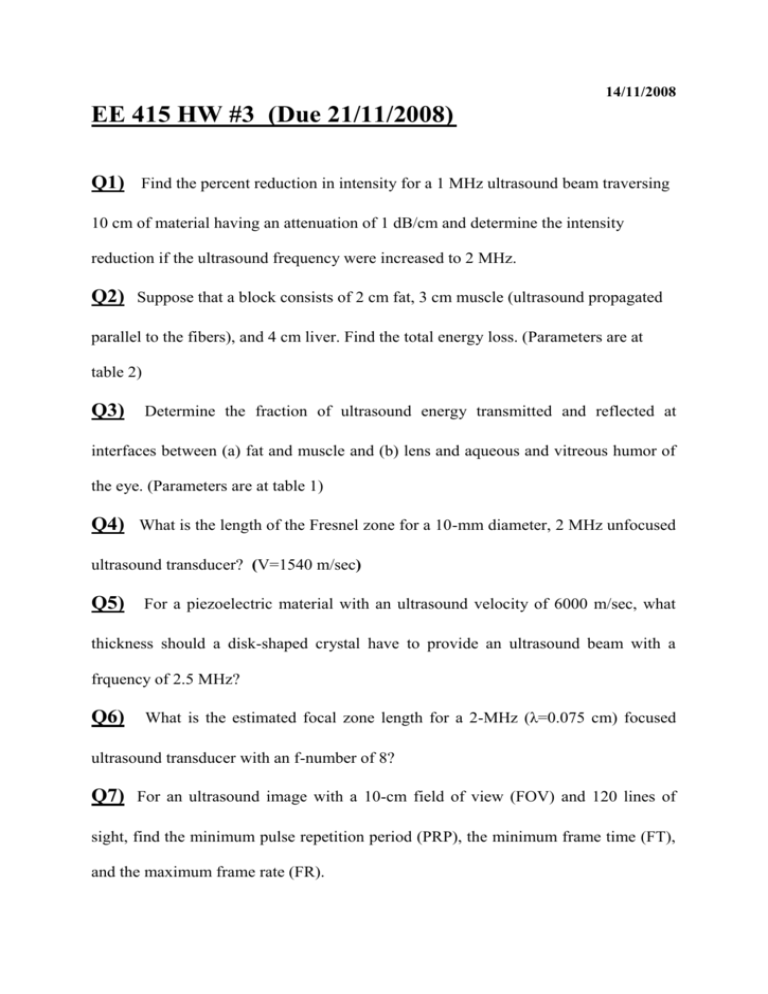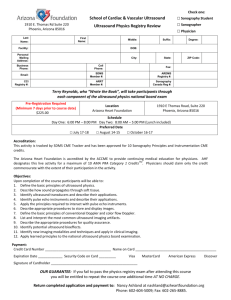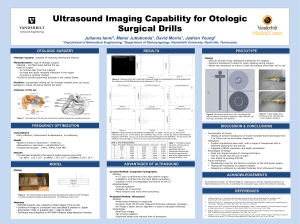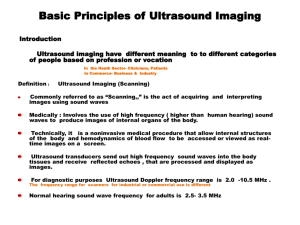EE 415 HW #1
advertisement

14/11/2008 EE 415 HW #3 (Due 21/11/2008) Q1) Find the percent reduction in intensity for a 1 MHz ultrasound beam traversing 10 cm of material having an attenuation of 1 dB/cm and determine the intensity reduction if the ultrasound frequency were increased to 2 MHz. Q2) Suppose that a block consists of 2 cm fat, 3 cm muscle (ultrasound propagated parallel to the fibers), and 4 cm liver. Find the total energy loss. (Parameters are at table 2) Q3) Determine the fraction of ultrasound energy transmitted and reflected at interfaces between (a) fat and muscle and (b) lens and aqueous and vitreous humor of the eye. (Parameters are at table 1) Q4) What is the length of the Fresnel zone for a 10-mm diameter, 2 MHz unfocused ultrasound transducer? (V=1540 m/sec) Q5) For a piezoelectric material with an ultrasound velocity of 6000 m/sec, what thickness should a disk-shaped crystal have to provide an ultrasound beam with a frquency of 2.5 MHz? Q6) What is the estimated focal zone length for a 2-MHz (λ=0.075 cm) focused ultrasound transducer with an f-number of 8? Q7) For an ultrasound image with a 10-cm field of view (FOV) and 120 lines of sight, find the minimum pulse repetition period (PRP), the minimum frame time (FT), and the maximum frame rate (FR). Q8) A 10-MHz ultrasound probe detects a 1.4-kHz Doppler shift at a sonation angle estimated as 45 degrees. Find the estimated velocity of blood flow and the percent error in the estimate if the angle of sonation is incorrect by as much as 3 degrees. Q9) A stenosis produces a high-speed jet in a vessel. The maximum velocity of RBCs in the stenosis is 80 cm/sec. (a) Find the minimum PRF that must be used to avoid aliasing for pulsed Doppler at 7.5 MHz. Assume that the angle of sonation is 0 degrees. (b) Find the field of view (FOV) if the PRF of 15.6 kHz calculated from above is used for imaging. Table 1 -Approximate Acoustic Impedances of Selected materials Table 2 – Attenuation Coefficients α for 1 MHz Ultrasound


![Jiye Jin-2014[1].3.17](http://s2.studylib.net/store/data/005485437_1-38483f116d2f44a767f9ba4fa894c894-300x300.png)








